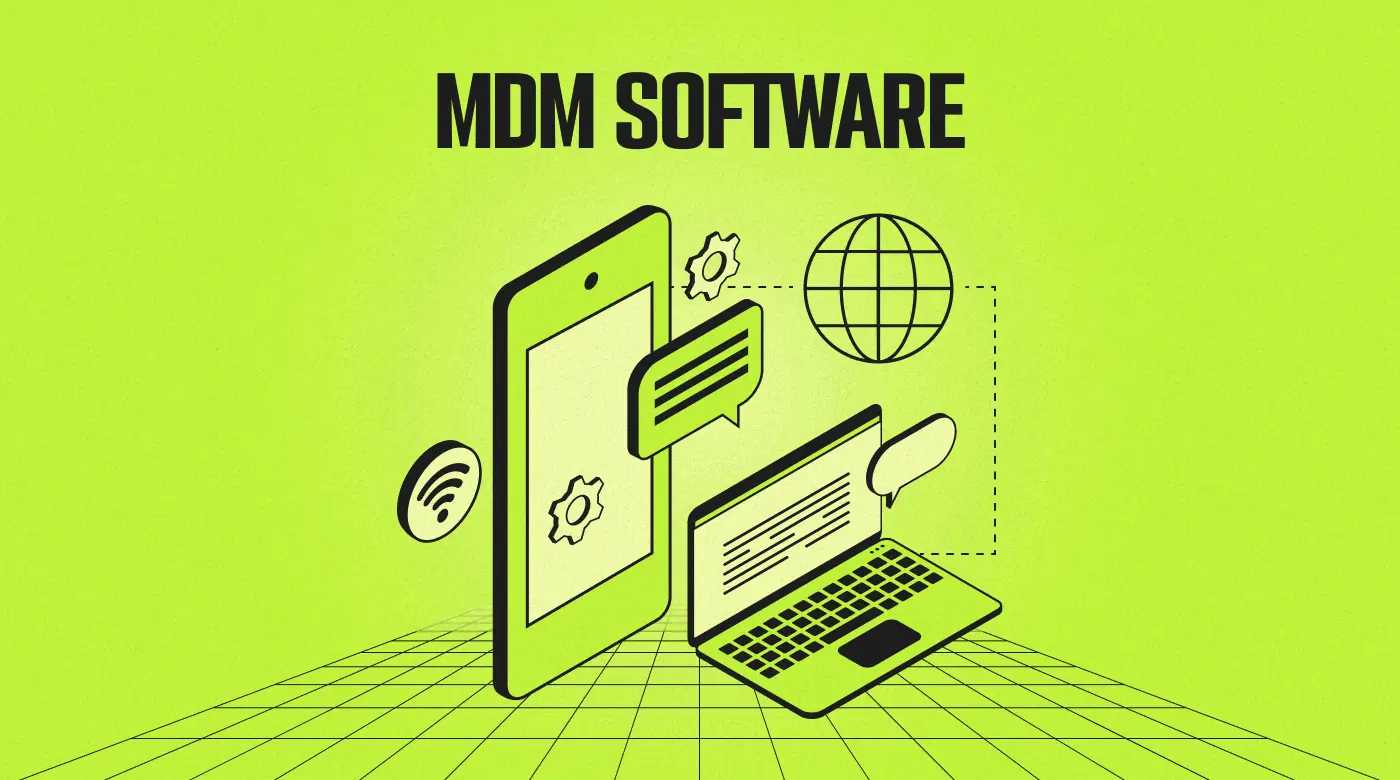In today’s world, where businesses and schools depend on a variety of devices, managing and securing them can be overwhelming for IT teams. Mobile Device Management (MDM) solutions play a crucial role in overseeing, securing, and ensuring compliance across all devices, from smartphones to laptops. This article highlights some of the best MDM solutions available today, their features, and their ideal use cases.
Trio: Comprehensive and Efficient MDM Solution
Trio is a powerful, all-encompassing MDM solution that offers businesses and educational institutions an efficient way to manage devices from a central platform. While Trio offers a range of advanced features, it stands out for its flexibility in managing both corporate-owned and employee-owned (BYOD) devices. It supports various operating systems, including Windows, macOS, Linux, iOS, Android, and even tvOS.
Trio’s key features include automated device enrollment, security policy enforcement, and remote actions like wiping or locking devices. IT administrators can perform all essential functions such as tracking devices, monitoring system usage, and ensuring security compliance—all from a single console. Trio also supports kiosk mode, making it ideal for special-use cases like digital signage or point-of-sale systems.
Another strong aspect of Trio is its focus on security. The platform includes features such as Endpoint Detection and Response (EDR) for real-time threat management, and Data Loss Prevention (DLP) tools to ensure sensitive information is protected. IT admins can also automate patch management to ensure devices remain secure and compliant with industry standards.
Trio integrates well with popular platforms such as Google Workspace and Microsoft 365, streamlining workflows and improving operational efficiency. It is a highly scalable option, adaptable for small businesses as well as large enterprises. With its comprehensive reporting tools, Trio gives IT teams the data they need to make informed decisions about device management.
Scalefusion: Flexible and Easy-to-Use MDM
Scalefusion has built a solid reputation for being easy to use without sacrificing security. This makes it a great fit for both small businesses and large enterprises. Schools also benefit from its integration with Apple School Manager, which allows staff to easily manage iPads for students and faculty.
Scalefusion offers several ways to enroll devices, whether it’s through email, Android Zero-touch, or Apple’s Device Enrollment Program. It supports a variety of operating systems, including Android, iOS, macOS, Windows, and Linux.]
Security-wise, Scalefusion doesn’t fall short, with options like role-based access, password policies, and Wi-Fi configuration. IT administrators can monitor devices, fix problems remotely, and ensure everything complies with security standards.
For businesses that need flexibility in managing their devices, Scalefusion offers plenty of customization. Its reporting tools allow IT teams to keep track of device health, potential security risks, and violations in real time.
JumpCloud MDM: Cloud-Based Management for Diverse Device Fleets
JumpCloud is a cloud-based MDM solution designed for larger organizations with a wide variety of devices. Its biggest strength is how well it integrates with identity and access management tools. This makes it ideal for companies that prioritize security alongside device management. IT teams can monitor device health, enforce security protocols, and manage user accounts across different devices from one central hub.
JumpCloud works across Windows, macOS, Linux, and iOS devices, giving businesses flexibility in managing mixed operating systems. Through its centralized dashboard, administrators can push updates, distribute software, and enforce policies to control access to certain apps or services. JumpCloud also provides detailed reports that give insights into device usage, security compliance, and any potential risks.
For enterprises needing quick and scalable device management, JumpCloud offers a fast setup process, eliminating the need for heavy on-premise infrastructure.
Hexnode: Strong Reporting and BYOD Management
Hexnode is a solid choice for businesses that need strong reporting features and a good solution for managing employee-owned devices. Its policies work across different operating systems, including Android, iOS, macOS, Windows, and even tvOS.
Hexnode’s reporting capabilities stand out. IT administrators can pull detailed reports on device health, security compliance, and incidents. It’s also an ideal platform for businesses that need to lock devices into specific apps or configurations, thanks to its kiosk mode.
On the app management side, Hexnode allows IT teams to create custom app catalogs for employees to install approved software. It also gives administrators the tools to block or allow certain apps to ensure security compliance.
ManageEngine Mobile Device Manager Plus: Flexible and Feature-Rich
ManageEngine’s Mobile Device Manager Plus is a highly flexible MDM solution offering both cloud-based and on-premise deployment options. Its intuitive interface makes it a great choice for small and large organizations alike, especially those needing advanced control over their mobile and desktop devices.
ManageEngine supports a broad range of operating systems, including Android, iOS, Windows, and Chrome OS. IT administrators can easily enroll and authenticate devices and configure security policies, such as data encryption, VPN settings, and role-based access controls.
For troubleshooting, ManageEngine allows for remote screen viewing and control, enabling IT teams to quickly resolve any issues without physically handling the device.
One of the platform’s strengths is its customization options. Businesses can set up devices to operate in kiosk mode, limiting the apps that employees can use, or create detailed profiles to ensure compliance with company policies. ManageEngine also offers a flexible pricing model, with a free version available for small businesses managing up to 25 devices.
MDM for Businesses: Finding the Right Fit
When looking for the right MDM for businesses, it’s crucial to assess your organization’s specific needs. Businesses must consider factors such as the types of devices in use, the level of security required, and whether they need additional features like identity management or remote troubleshooting.
An ideal MDM solution not only helps manage devices but also enhances operational efficiency by automating routine tasks and providing detailed insights into device usage and security.
With the wide range of MDM options available, businesses can choose solutions that best match their requirements, whether they need something simple and cost-effective or a more advanced platform. The choice largely depends on the scale of the business, the complexity of the IT environment, and the specific challenges the organization faces in managing its devices.
MDM Migration: Simplifying the Transition
As businesses grow or update their IT infrastructure, there often comes a point when they need to switch from one MDM solution to another. MDM migration is the process of moving data, applications, and configurations from an existing MDM platform to a new one. It’s a critical step in ensuring that businesses maintain security, compliance, and efficiency during the transition.
Migration can take several forms, from moving to a newer version of the same platform to shifting to an entirely different MDM provider. For example, some businesses may migrate from an on-premises solution to a cloud-based one to benefit from scalability and cost savings. A well-planned migration process involves careful pre-migration preparation, execution, and post-migration validation to ensure no data is lost and all devices continue to function correctly.
When migrating, it’s important to consider compatibility between the new and old systems, ensuring that the transition is smooth. IT administrators must also be prepared for potential downtime and have strategies in place to minimize disruptions to business operations. While challenging, MDM migration can bring significant benefits, improving the overall efficiency and security of an organization’s mobile device management process.
Concluding the Best MDM solution
Picking the right Mobile Device Management (MDM) solution is key to keeping things secure, running smoothly, and staying productive. Whether you’re managing a small business or a large enterprise, each of the options we’ve discussed has something different to offer, depending on your needs.
Trio does a great job at covering all bases, making it a strong pick for those looking to manage a wide range of devices with confidence. Solutions like Scalefusion and JumpCloud are also solid choices, especially if you’re after flexibility and ease of use.
As companies grow or update their tech setup, MDM migration becomes a smart move, helping them switch between platforms without causing any disruptions. In the end, the best MDM for you will come down to what your organization specifically needs.





